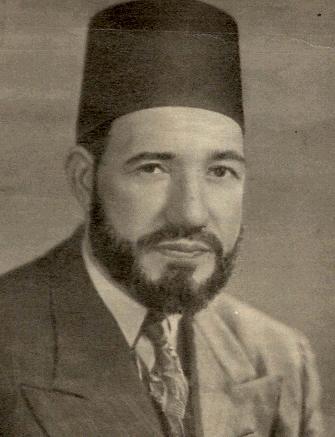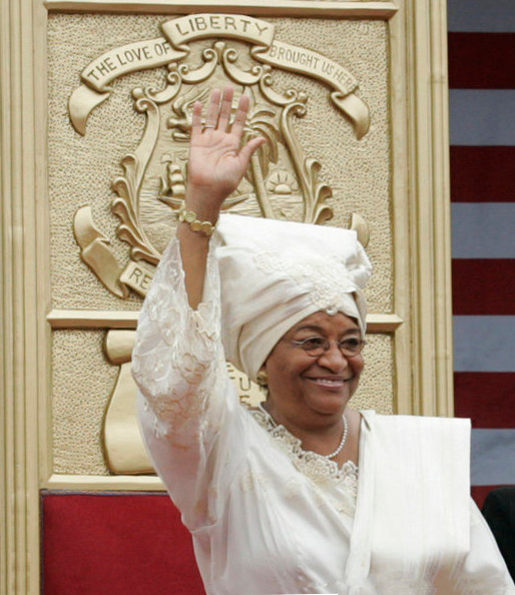Southern Sudanese voting in Juba, January 9, 2011
 Focus Question: When did modern African countries become independent nations and how was independence achieved?
Focus Question: When did modern African countries become independent nations and how was independence achieved?
 CROSS-LINKS:
CROSS-LINKS:
Independence from Colonialism
 Timeline showing when African countries gained their independence.
Timeline showing when African countries gained their independence.
Berlin Conference to divide Africa between the European powers
 The Berlin Conference of 1884
The Berlin Conference of 1884
The vast majority of countries in Africa gained independence in the 1960s and 1970s. Some were granted independence by their former occupiers; others fought liberation movements and won their independence.
- Exceptions of note were Liberia, founded by former American slaves and never colonized, Eritrea, which used to be part of Somalia, Namibia, formerly controlled by South Africa, and Western Sahara, which used to be part of Morocco, and whose independence is still disputed.
- Most nations in Africa won their independence through internal revolution.
- A few were granted independence by their European rulers (for example, Belgium granted the Democratic Republic of Congo its independence), but even those countries were not free from internal conflict. Using the Democratic Republic of the Congo as an example, Belgium left the country quite suddenly, leading to an internal power struggle that, over 40 years later, has not been resolved.
- Zimbabwe, too, is showing the after-effects of colonization. The freedom fighter Robert Mugabe came to power after independence, and gradually consolidated more and more power for himself alone. He named himself President for Life in 1985.
- In the face of recent (2008) presidential elections that resulted in his opponent's vicory (Morgan Tsvangirai), Mugabe refused to relinquish power. An example of this can be seen in the deterioration of sanitation and clean water systems in the country, which has been suffering from a severe cholera outbreak since summer 2008.
 |
| Nelson Mandela Meets His Predecessor, Frederik de Klerk, 1992 |
Here is a video about the history of South Africa, one of the highlighted colonies that still is divided because of these issues today.
Maps of Africa: 1750-2005
 Multimedia Links:
Multimedia Links:
Country Independence Information
Libya (1951)
Annexed by Italy in 1911 after Italo-Turkish wars. In 1934 becomes Italian colony. Italian and German forces were driven out during World War II and Libya was under the control of Great Britain and France. Italy officially gave up all claims in 1947. At the United Nations General Assembly in 1949 Libya was granted independence. Independence became effective in 1951 when the country became the United Kingdom of Libya.
Sources:
Egypt (1952)
Originally controlled by the Turks and then the British.
 |
Hassan al-Banna, Muslim Brotherhood founder
|
Independence was gained in 1922, but Britain still maintained control of government institutions and the Suez Canal. A coup de tat by the Free Officers in 1952 led to the toppling of the British backed monarch in Egypt.
Click here for an Egypt Profile, including a broad historical timeline from BBC News.
For background, see Egyptian Independence, 1919-1922 See also, Unilateral Declaration of Egyptian Independence, 1922.
An Illustrated History of the Muslim Brotherhood from Slate Magazine using a graphic novel format.
For more information on Egypt, see the CIA World Factbook
Sudan (1956)
Co-ruled by Egypt (1874) and Britain (1882) until 1953, when granted self government. On January 1, 1956 independence was proclaimed. Since then, the Sudan has been ruled by unstable parliamentary and military governments.
Sources:
Tunisia (1956)
Was a French protectorate from 1881 until 1956. Supported the Vichy government in France (which collaborated with Hitler once France was over run by Germany) during WWII. When Tunisia was turned over to the Free French, the Tunisian ruler was arrested for aiding the enemy. This sparked unrest against French rule. In 1954, Tunisia was promised full internal autonomy. This meant no control over foreign matters. Eventually, full independence was achieved in March 1956. France, however, did not fully withdraw from the country until 1963.
Sources:
Morocco (1956)
Originally dominated by Spain. In 1912, however, France imposes protectorate. In 1953 France exiled Sultan Muhammad V and replaced him with Mohammad Ben Aaraffa. This sparked public opposition and Muhammad V returned in 1955. Full independence was achieved in 1956.
Sources:
Niger (1960)
Became a French colony in 1922. After the establishment of the Fifth French Republic on December 4, 1958, Niger became an autonomous state. Full independence was gained on August 3, 1960.
Sources:
Chad (1960)
Part of French Equatorial Africa in 1913. In 1946 become autonomous republic. An independence movement led by Francois (Ngarta) Tombalbaye led to complete independence on August 11, 1960. This was followed by three decades of civil war.
Sources:
Mali (1960)
France began to dominate in 1880, but there was resistance until 1898 when France took full control. In 1960, the Sudanese Republic and Senegal became independent of France and formed the Mali Federation. Senegal withdrew from this union and what had once been called the Sudanese Republic became Mali.
Sources:
Mauritania (1960)
Became a French territory in 1904, a French colony in 1920. Gained independence from France in 1960.
Sources:
Algeria (1962)
Algerian President Ahmed Ben Bella and President John F. Kennedy, 1962

Annexed to France in 1830. Nationalist movements sprung up between WWI and WWII. A Revolutionary Committee was formed by Ahmed Ben Bella and 8 others in March of 1954.
- The National Liberation Front (FLN) was created. From 1954 until 1962, the French and the National Liberation Front fought for control of Algeria.
- The Front employed guerilla warfare tactics and blew up important buildings. French President De Gaulle finally makes concessions in order for some kind of peace to be possible; he called for a referendum where the people of Algeria could decide if they want to remain under French rule.
- A rebel group of those dedicated to keeping Algeria in the hands of the French went against the orders of the Army and De Gaulle. Calling themselves the OAS, the group attacked both the FLN and the French.
- Their movement was eventually put down and the Algerians voted for independence in 1962.
Sources:
See also Algerian War
Rwanda (1962)
Was originally under German control. However, the Germans lost control of the country during WWII. At that point, Belgium took over control. In the 1950s, there was violence between the Hutu and Tutsi ethnic groups. By the time independence from Belgium was granted in 1962, over 120,000 Tutsi had fled the country to avoid genocide.
Sources:
For more on the genocide:
South Sudan (2011)
On January 9, 2011, a referendum will take place in Southern Sudan to determine whether this area will become its own country, separate from Northern Sudan. Learn more about this initiative and what's at stake here.
South Sudan officially gained independence on July 9, 2011. An overwhelming majority (99%) of Southern Sudanese voted for the split. However, Sudan is now in conflict with South Sudan over the border.
Click here for more on South Sudan.
Click here for a lesson plan on Sudan/South Sudan
Click here for a Cholera map of Zimbabwe from the BBC and the World Health Organization
Independence Chart taken from About: African History
 Click here for the TED talk "The Leaders Who Ruined Africa and the Generation Who Can Fix It" by Fred Swaniker.
Click here for the TED talk "The Leaders Who Ruined Africa and the Generation Who Can Fix It" by Fred Swaniker.
Women Leaders in Africa Today
Ellen Johnson-Sirleaf, Inauguration as President of Liberia, 2006

Women and Politics in Africa Today from Democracy in Africa website, December 2013.
Funmilayo Ransome-Kuti - was a teacher, political campaigner, women's rights activist, traditional aristocrat and founder of the Nigerian Women’s Union. She was one of the most prominent leaders of her generation. She was Nigeria's first ever representative at a women's international conference (in the USSR in 1963). She was one of the founders of the Nigeria Union of Teachers and the Nigerian Students Union.
In 2015, in Africa
- 64 percent of the Rwanda National Parliament are women (the only country where women outnumber men in the legislature)
- 40 percent of the members of the South Africa national assembly are women. Also in Senegal and the Seychelles, more than 40% of parliamentary seats are held by women, while in Mozambique, Angola, Tanzania and Uganda over 35% of seats are occupied by women. By contrast, women in the US women hold 18% of the seats in the House and 20% in the Senate.
- Ngozi Okonjo-Iweala is Finance Minister of Nigeria
See also, Women in National Parliaments, 2014
Does Women's Participation in African Legislatures Encourage Women's Political Participation?
- Click here for a map showing various separatist movements in Africa
- Click here for a map showing Africa's developments through the 1900s
For info on each country, visit the CIA Factbook.
Books:
The Scramble for Africa
The 19th century saw a wholesale dividing of Africa among European nations, primarily by England, France, Belgium and Portugal.
- No longer content to kidnap Africans for slavery in their colonies and home nations, now European powers took their struggles for power and prestige to the African continent, and competed with each other for dominance there.
- After a lot of tug-of-war over land, the Berlin Conference (1884-1885) made national divisions official (for the Europeans, at any rate).
- European control over African land meant European control and ownership of African resources, such as ivory, rubber, hemp, and other materials essential to the perpetuation of European industry. Many African nations did not see self-rule and independence until the 1960s and 1970s; many did not achieve independence until the 1980s and 1990s.
- By 1913, the following African nations were under the control of a short list of European powers. Notice that many of these nations do not have the names they have now. Anglo-Egyptian Sudan’s governance was influenced by England, as was Zanzibar’s and Egypt’s.
- Only Liberia in the west, and the Empire of Ethiopia in the east, were completely independent states in 1913; Ethiopia was later colonized by Italy.
Burkina Faso
England
Union of South Africa
Nigeria
North Rhodesia
South Rhodesia
Gold Coast
Uganda
British Somaliland
Gambia
British East Africa
Swaziland
Basutoland
Sierra Leone
Bechuanaland Protectorate
France
Algeria
French Morocco
Senegal
Nigeria
Cote d’Ivoire
French Equatorial Africa
Gabon
Tunisia
Madagascar
French Somaliland
Germany
South West Africa
Kamerun
Togoland
German East Africa
Spain
Rio de Oro
Ifni
Tangier
Rio Muni
Italy
Libya
Italian Somaliland
Eritrea
Portugal
Angola
Mocambique
Cabinda
Belgium
Belgian Congo
Source: Historical Atlas of Africa; Cambridge U. Press; 1985.
Additional Resources:
- Click here for lesson plans on why the Europeans colonized Africa
- Click here for a lesson plan on imperialism in Africa. It was created for a specific teacher and textbook, but contains political cartoons and good ideas for openers.
- Click here for a lesson plan on Zimbabwe and the problems it faced after imperialism
Comments (0)
You don't have permission to comment on this page.